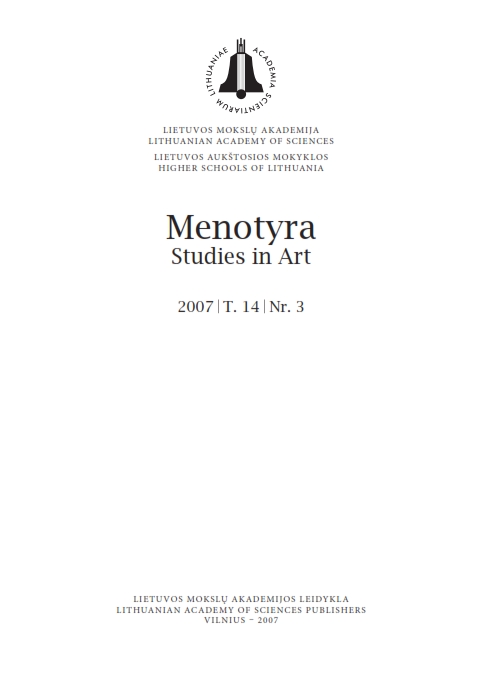Sunykusių audyklų pėdsakais: Vilnius, Skapiškis, Santekliai
Traces of old weaving workshops: Vilnius. Skapiškis. Santekliai
Author(s): Lijana ŠatavičiūtėSubject(s): Cultural history, Visual Arts, Cultural Anthropology / Ethnology, 19th Century, Pre-WW I & WW I (1900 -1919), Sociology of Art
Published by: Lietuvos mokslų akademijos leidykla
Summary/Abstract: The object of the article is to overview less known facts concerning the development of weaving in the late 19th and early 20th century, cherishers of weaving, mainly landladies, who established weaving workshops and contributed their efforts to the further development of this traditional trade. Countess Anna Mohl, earlier than other landladies, took interest in weaving art. She founded her first weaving workshop in the native manor of Juozapynė (Józefinów, province of Vitebsk, now Belarus) before 1890. From 1904 existed her second weaving workshop-school in Rzeczica (province of Vitebsk, Belarus). In an attempt to spread out handicrafts in extensive sections of the population, in 1913 Anna Mohl established a weaving workshop-school at boys’ orphanage of Juozapas Montvila in Vilnius (Rasos settlement). The countess played an important part in the popularization national traditions and trades in the culture of that period.After restoration of the independence of Lithuania in 1918, organization of public life and employment of population began. In 1920, Society of Lithuanian Arts Creators organized a workshop of sashes in Skapiškis, which was headed by Vanda Silvestravičaitė – an emancipated and noble public woman who took part in social activities. Traditional Lithuanian sashes, tablecloths, runners, strips of carpets, neck-ties and other textile souvenirs made a great number among the artefacts of the workshop’s produce.In 1919, in the manor of Santekliai (near Viekšniai), a weaving workshop was established by Ona Bagnickaitė (1875– 1941) – the owner of this manor and an artist who studied painting and weaving in Warsaw, Paris and Naugardukas (now Belarus). O. Bagnickaitė created tapestries and decorative textiles decorated by patterns of national character. In the beginning of 1920s, in the Tytuvėnai manor there existed a weaving workshop founded by the artist and landlady Sofija Dembovskytė-Romerienė (1885–1972).The author comes to conclusions that founders of the workshops, with their modern mentality, combined national traditions with the openness of mind and innovations, continuation of traditions and tendencies of the new capitalist age.
Journal: Menotyra
- Issue Year: 14/2007
- Issue No: 3
- Page Range: 16-31
- Page Count: 16
- Language: Lithuanian

